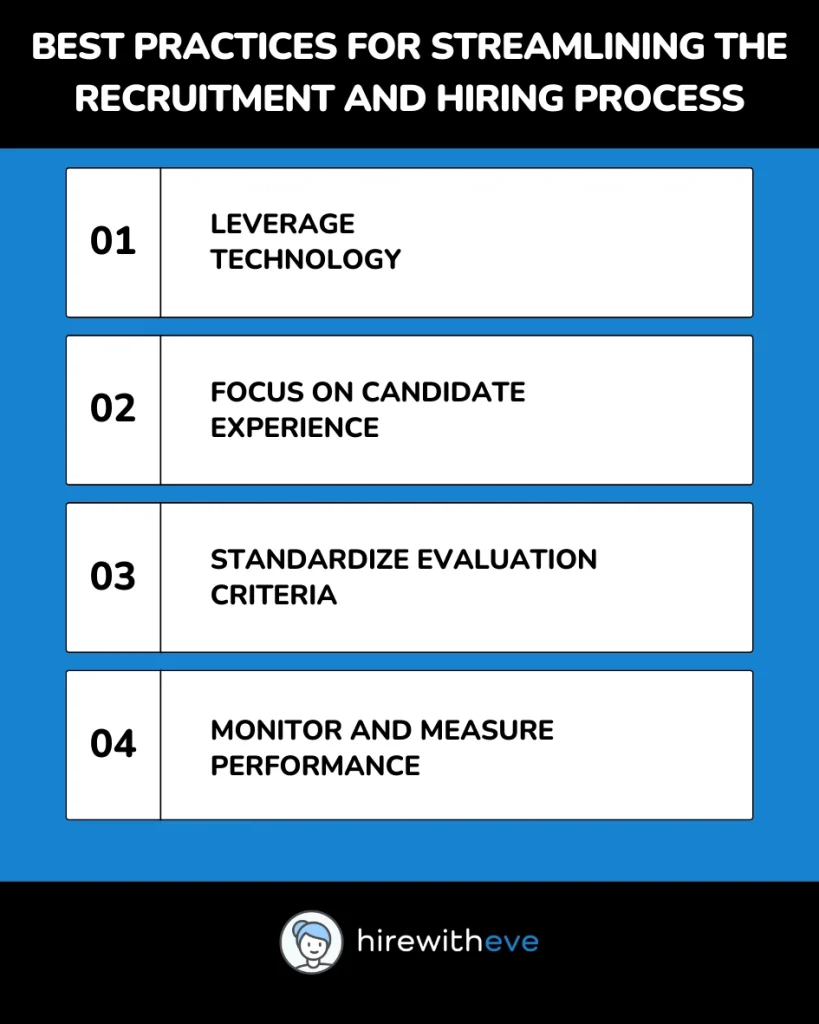Optimizing the Recruitment and Hiring Process for Modern Talent Acquisition

In today’s fast-paced, ever-evolving job market, organizations must refine their recruitment and hiring process to stay competitive. Talent acquisition specialists and HR managers play a pivotal role in ensuring that the right talent is identified, engaged, and onboarded efficiently. A well-structured recruitment and hiring process helps reduce time-to-hire, improves candidate quality, and fosters better workforce alignment with company objectives.
This blog will explore the essential elements of an optimized recruitment and hiring process, discuss the challenges HR managers face, and outline best practices to help streamline the process. By mastering these elements, organizations can significantly enhance their ability to attract and retain top talent in an increasingly competitive market.
What is the Importance of a Structured Recruitment and Hiring Process?
A structured recruitment and hiring process is essential for creating a consistent, transparent, and efficient pathway for hiring the right talent. Without a defined process, organizations may face increased turnover rates, longer hiring cycles, and poor candidate experiences, ultimately affecting overall company performance.
By having a clear recruitment and hiring process, organizations can ensure:
Consistency in evaluating candidates across different roles
Reduced biases, promoting fair hiring practices
Better alignment with organizational goals and values
Faster onboarding and integration of new employees
Improved candidate experiences, which contribute to employer branding
The efficiency of the recruitment and hiring process not only impacts how quickly an organization can fill roles but also influences the overall quality of hires, which can drive long-term business success.
What are the Key Stages in the Recruitment and Hiring Process?
To better understand the recruitment and hiring process, it is important to break down its stages, each of which plays a crucial role in ensuring a smooth flow of activities:
Job Analysis and Planning: The first step in the recruitment and hiring process is conducting a thorough job analysis to determine the necessary skills, qualifications, and experience required for the position. This step sets the foundation for attracting the right candidates.
Sourcing and Attracting Talent: Sourcing involves finding the right candidates through job boards, social media, employee referrals, and recruitment agencies. This is where talent acquisition professionals work to bring the right candidates into the pipeline, a critical stage of the recruitment and hiring process.
Screening and Selection: Screening involves narrowing down the list of candidates to those who meet the job requirements. Through resume reviews, phone interviews, and skill assessments, the pool of potential hires is refined. The selection phase further evaluates the remaining candidates through interviews, assessments, and reference checks.
Offer and Onboarding: Once a candidate is chosen, the recruitment and hiring process moves to the offer stage. This includes salary negotiations, background checks, and preparing the employment contract. The final step is onboarding, ensuring the new hire integrates smoothly into the company.
Each stage of the recruitment and hiring process requires precise attention and coordination to guarantee that the most suitable candidate is hired and successfully integrated into the company culture.
What are the Challenges in the Recruitment and Hiring Process?
While the recruitment and hiring process is essential for organizational success, it comes with several challenges that HR professionals must navigate:
Competition for Talent: In today’s market, top candidates have numerous job opportunities. Companies with a lengthy or unclear recruitment and hiring process may lose out on the best candidates to competitors with more efficient processes.
Bias in Hiring: Unconscious bias can infiltrate the recruitment and hiring process, leading to unfair practices that overlook qualified candidates. Ensuring a bias-free process requires careful attention to each stage, from job descriptions to final selection.
Candidate Experience: A positive candidate experience is a crucial aspect of the recruitment and hiring process. Poor communication, excessive delays, and unstructured interviews can leave candidates with a negative impression of the company.
Technological Integration: The growing use of technology in the recruitment and hiring process — such as applicant tracking systems (ATS) and AI-based tools — can be both a challenge and an opportunity. HR professionals need to adapt to these tools to optimize their processes.
What are the Best Practices for Streamlining the Recruitment and Hiring Process?
To overcome the challenges of the recruitment and hiring process, HR professionals should adopt the following best practices:

Leverage Technology: Use advanced recruiting tools such as ATS, video interviewing platforms, and AI-based assessments to enhance efficiency in the recruitment and hiring process. These technologies can automate repetitive tasks, provide valuable insights, and help reduce time-to-hire.
Focus on Candidate Experience: A positive candidate experience should be prioritized at every stage of the recruitment and hiring process. This includes timely communication, clear job descriptions, and structured interview processes that reflect the company’s values.
Standardize Evaluation Criteria: To ensure fairness, companies should establish standardized evaluation criteria for each role. Using skill-based assessments and structured interviews ensures that all candidates are evaluated consistently, reducing bias and improving the quality of hires.
Monitor and Measure Performance: Regularly reviewing the performance of the recruitment and hiring process is essential. Key metrics such as time-to-hire, cost-per-hire, and candidate satisfaction rates can provide insights into areas for improvement.
By implementing these best practices, organizations can streamline their recruitment and hiring process, resulting in better hires, reduced costs, and improved overall performance.
Conclusion
As discussed, optimizing the recruitment and hiring process is critical for any organization aiming to attract and retain top talent.
This is where platforms like HirewithEve.ai come into play. HirewithEve.ai is designed to support talent acquisition specialists and HR managers by providing key features that align with modern hiring needs:
Skills-Based Assessments: HirewithEve.ai enables organizations to assess candidates based on their actual skills, ensuring that the right talent is selected for the job.
Candidate Experience Tools: HirewithEve.ai’s user-friendly interface and communication tools ensure that candidates have a positive experience throughout the recruitment and hiring process, reflecting well on the organization’s employer brand.
Data-Driven Insights: The platform provides HR teams with valuable data insights, allowing them to analyze the effectiveness of their recruitment and hiring process and make informed decisions for continuous improvement.
By incorporating these features, HirewithEve.ai helps organizations navigate the complexities of the recruitment and hiring process, making it easier to find and onboard the best talent efficiently. In today’s competitive job market, investing in the right tools like HirewithEve.ai can significantly enhance your recruitment strategy and help your organization stay ahead.
